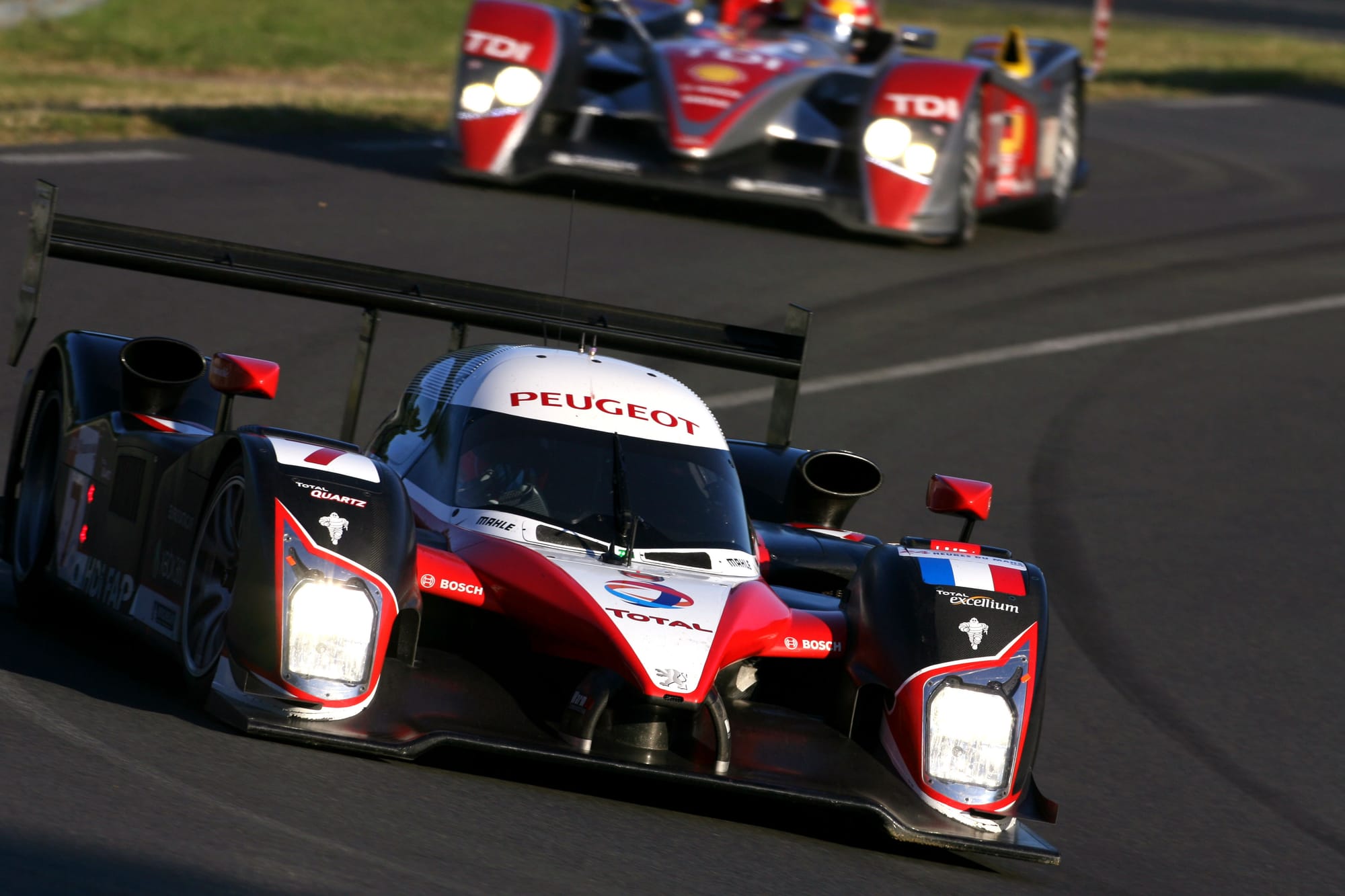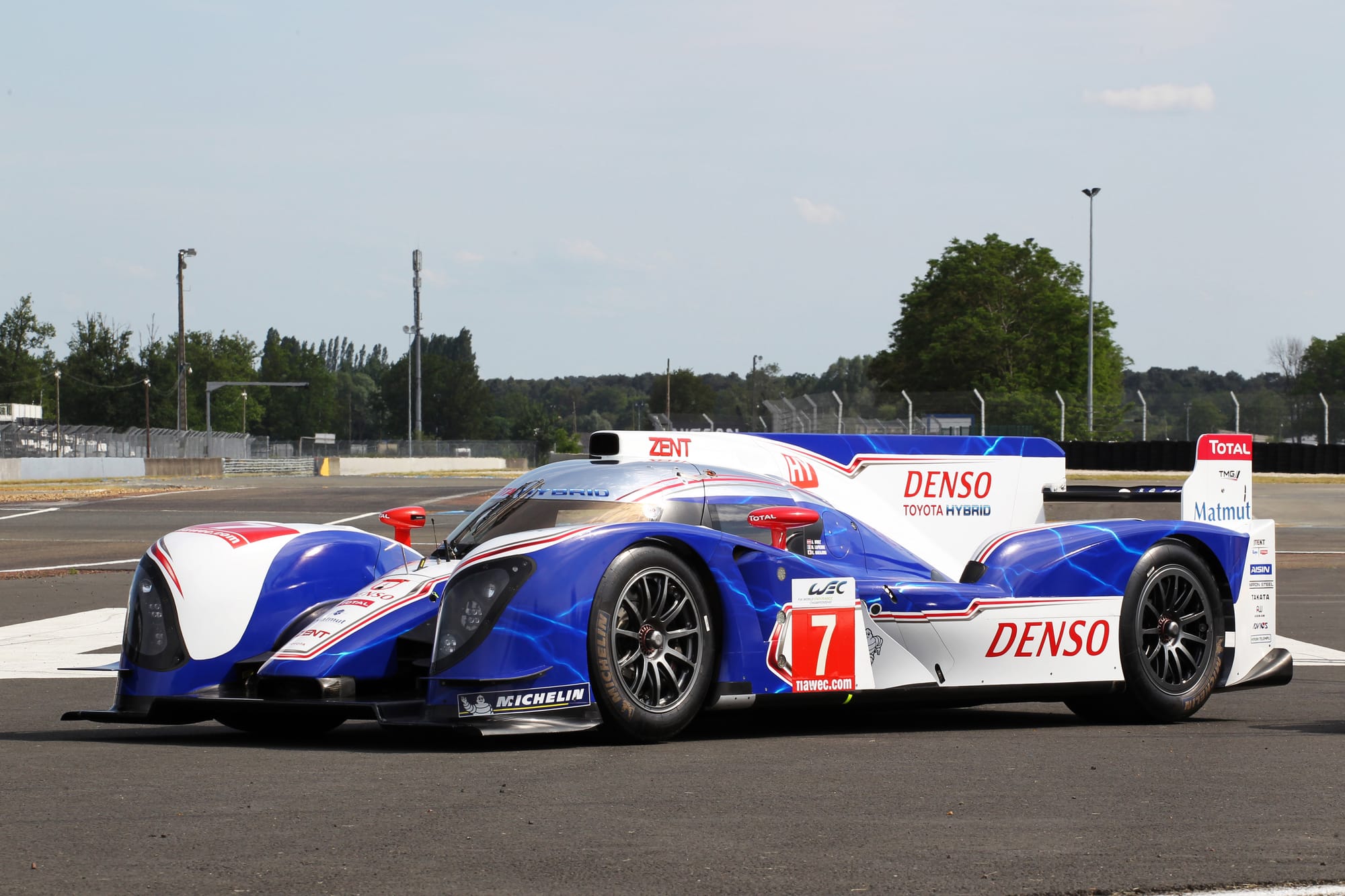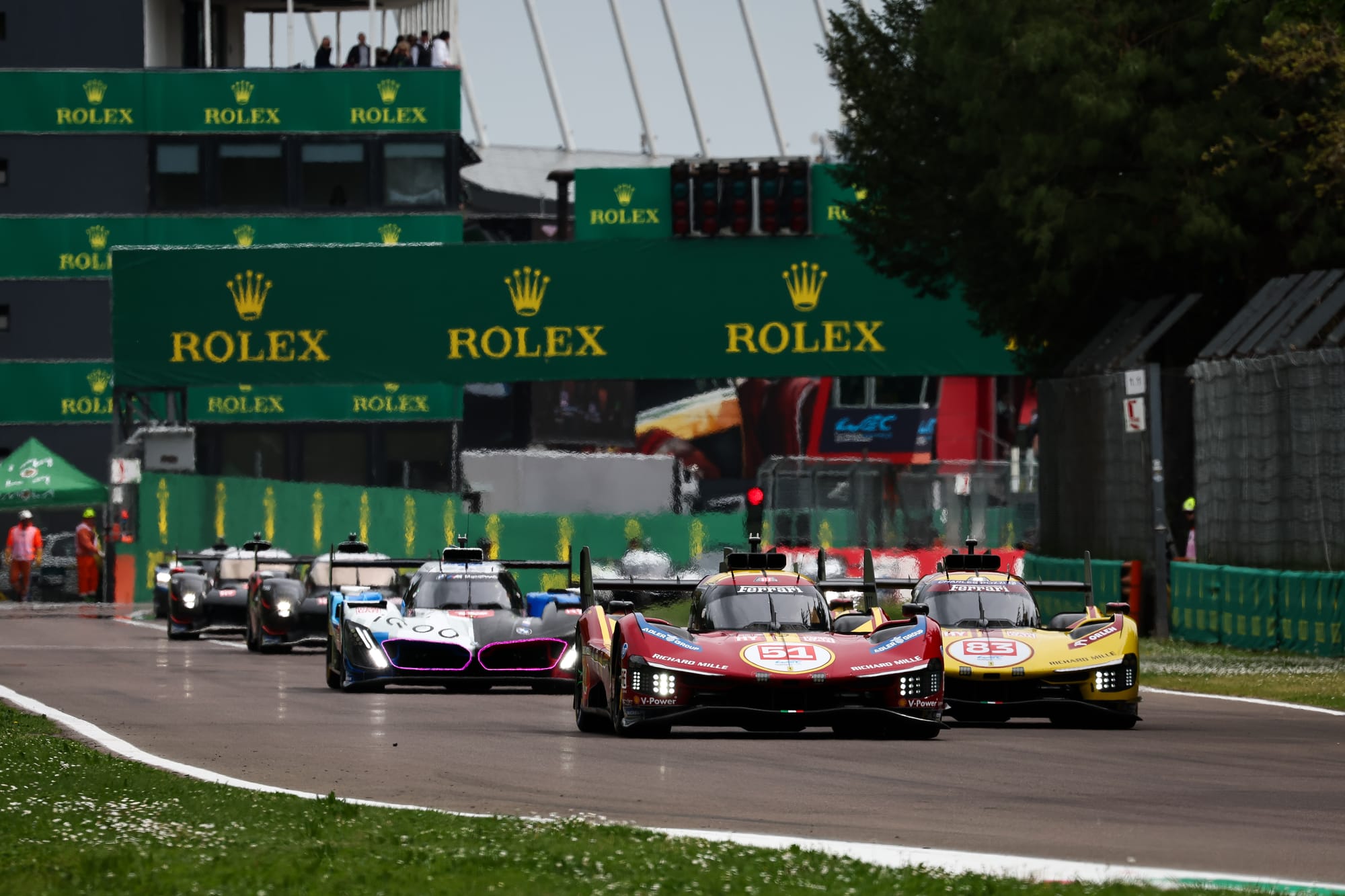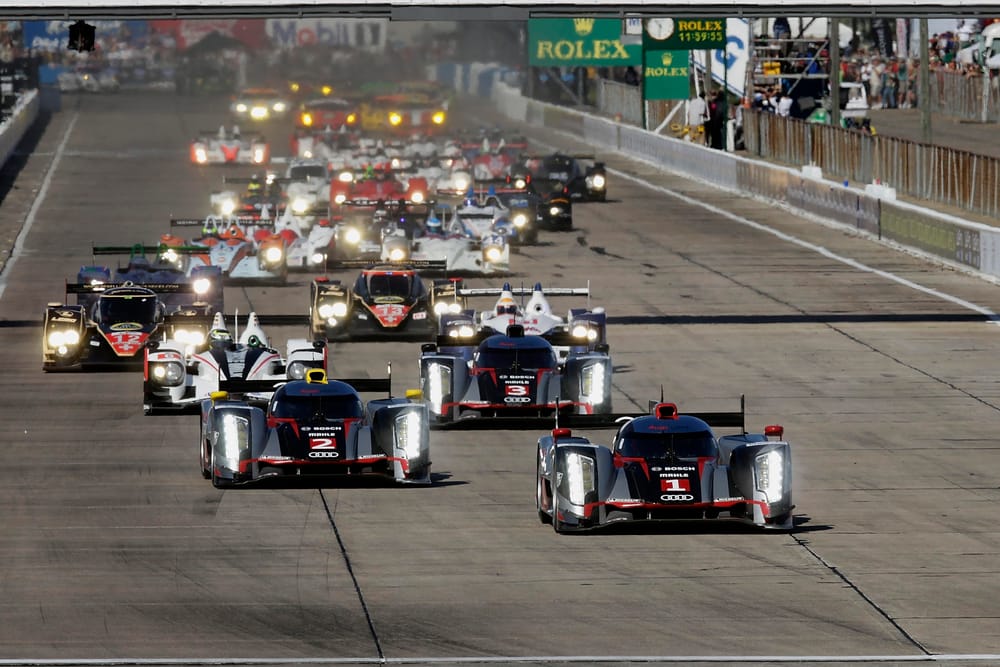Strength is often born from adversity and hardship. Perhaps that is what has allowed the World Endurance Championship to become today the second biggest FIA world championship, behind only Formula 1. The path has been anything but smooth, marked by setbacks, economic crises, and unexpected withdrawals, but the WEC ship is still afloat.
In fact, it is thriving like never before, celebrating its 100th race this weekend at Fuji with no fewer than eight manufacturers competing in the top class, something no other world championship can claim.
“Getting to 100 races and forming an entire industry for the discipline with a world championship is a very special thing, I believe,” said Neel Jani.
The Swiss driver is one of just four men on the Fuji grid who also raced in its inaugural round at Sebring in 2012, alongside Richard Lietz, Loïc Duval, and Frédéric Makowiecki. Yet like everyone else back then, he feared the whole project might collapse at the last minute.

Back in 2007, Peugeot’s arrival to take on Audi brought endurance racing back to life after years of decline. With Porsche, BMW, Toyota, and Mercedes all gone by the late 1990s, Audi had been left with little opposition. The Audi–Peugeot rivalry rekindled interest and gave the ACO and FIA the momentum to begin working behind the scenes to resurrect the World Endurance Championship, which had been scrapped at the end of 1992 by then-FIA president Max Mosley.
The first step was the creation of the Intercontinental Le Mans Cup (ILMC) in 2010, a global expansion of the European Le Mans Series. Then, on June 3, 2011, the FIA and ACO officially announced the birth of the WEC for 2012. Four months later, Toyota confirmed its entry with a part-season effort before committing fully in 2013.
“Obviously back in 2012 to team up with the FIA gives a lot of credibility to the championship, and then to get the world championship title, it really gives extra credibility,” recalled Sébastien Buemi.
Everything seemed to be going in the right direction. And yet...
“I was very surprised when it was confirmed, because I’d been hoping for it for 10 years,” said Allan McNish. “But the day of the entries was a day where we were at our Audi training camp and I remember coming out of the gym session, and we found out that actually one of the parties that normally would have been involved [Peugeot] was not involved any longer, which was quite a shock.”
Peugeot Sport, which had pushed harder than anyone for the WEC's revival, was forced to withdraw from LMP1 on January 18, 2012, citing economic difficulties. The news came just days before the official entry list was to be published, putting the WEC’s future in serious jeopardy.
The issue was existential: to receive FIA world championship status, at least two manufacturers had to be committed. With Peugeot gone, all the hard work risked being wasted. A flurry of behind-the-scenes negotiations ensued, with the FIA, ACO, Audi, and Toyota determined to keep the project alive.
Toyota agreed to register for the season with a single car, despite being unable to contest the opening two rounds. To level the playing field, Audi accepted that only its best-finishing car at each event would score points toward the manufacturers’ title. The duel was far from equal, but the important thing was that the WEC survived.

“Toyota stepped in very quickly and became a sort of backbone of FIA WEC,” McNish remembered. “I think it needed a lot of real commitment from two big manufacturers to step in at the start, which Audi and Toyota did before Porsche came along as well. We’re talking about two of the biggest manufacturers within the VW Group, and Toyota.
“So in that respect, it was something that allowed it all to move forward. And in all honesty, I don’t suppose I really appreciated it at the time.”
The inaugural season began in March at the Sebring 12 Hours, where 30 WEC entrants were joined by cars from the American Le Mans Series for a massive 64-car grid. On track, McNish triumphed in the Audi R18 e-tron quattro he shared with Tom Kristensen and Rinaldo Capello.
At the time, organiser Le Mans Endurance Management (LMEM) had only five employees. Now, the workforce totals 36.
Scepticism was rife about the jointly-organised series. “Between the FIA and the ACO, it will never work,” many said. How far away Sebring 2012 now feels - especially that modest press conference in a stifling prefab with then-FIA president Jean Todt. And yet, it was only 13 years ago.
“We had this baby, which we had to make grow,” ACO president Pierre Fillon told The Race.
The LMP1 Hybrid era produced the most technologically advanced racing cars ever built, even luring active F1 drivers such as Fernando Alonso and Nico Hülkenberg, both of whom won the 24 Hours of Le Mans. The ‘Dieselgate’ scandal could have sunk the championship, with Audi and Porsche both pulling out in 2016 and 2017. But once again, the right choices were made.
From the collapse of the over-expensive LMP1 class came opportunity: the creation of Hypercar. Of course, not everything is perfect. The Balance of Performance system remains unpopular with purists and still needs refinement. But the numbers speak volumes.

Hypercar regulations brought Ferrari back to the top class after 50 years away, something unimaginable a decade ago. Alpine, Aston Martin, BMW, Cadillac, Peugeot, Porsche, and Toyota are also present. Genesis (Hyundai) will arrive in 2026, followed by McLaren and Ford in 2027.
Despite doubts about Porsche’s long-term commitment, the WEC could have as many as 11 factory programmes by 2027. Neither Le Mans nor any other FIA world championship has ever seen such depth.
“Now again there is the big success [of Hypercar], and having many people involved, so to a great extent, I would say that it’s been a real success what the FIA and ACO have managed to do,” said Buemi. “Because even if now it looks amazing to have so many manufacturers, this was not a given at the time.”
Crowds are bigger than ever, with the Le Mans 24 Hours selling out in under 48 hours. That is why LMEM has chosen to mark its 100th race in style at Fuji, with special branding, decorated safety cars, and a tribute helmet presented to each of the weekend’s polesitters featuring the names of all past pole-winners. One hundred may just be a number, but it is the perfect moment to reflect on the journey.
“It’s only looking back that you realise that sometimes people do have to take big risks in these situations to get something moving,” admitted McNish. “You’ve got to have a belief in it, which – thankfully – some great people did and they moved it forward.
“Dr. Wolfgang Ullrich [Audi’s then Head of Motorsport] obviously supported it heavily, and the same on the Toyota side too, and that allowed the ACO, the FIA and LMEM to bring it to life with their vision.”
McNish was right to single out those two manufacturers, especially Toyota, which has been a constant presence in the top class since the very beginning.
“We can certainly thank Toyota for trusting us and supporting us through the difficult years,” added Fillon. “We had to face Peugeot’s withdrawal, Dieselgate which put LMP1 in peril, COVID, but we held on.
“I never doubted, I always believed. Today, we have a set of regulations that has allowed us to attract between 8 and 10 manufacturers, and that is a clear sign of success.”
The potential departure of Porsche at the end of the season may bring fresh turbulence for the WEC. The tower may shake, but it will not fall. Past crises have only strengthened its foundations. This 100th race marks a milestone, but it is far from the end of the story.
Key WEC statistics
- Most successful driver overall: Sébastien Buemi with 28 wins (29 drivers have won in Hypercar, and 832 drivers have raced in WEC).
- Most world titles: Sébastien Buemi and Brendon Hartley, with 4 each.
- Most starts: Sébastien Buemi (91).
- WEC entries have represented 40 different brands.
- As of the 2025 COTA round last month, 3544 entrants have raced a combined 5,873,241km (3,649,731 miles).
- Porsche has the most wins with 71 – including 21 overall victories (17 in LMP1, 4 in Hypercar), 6 in LMGT3, 20 in GTE Pro, and 24 in GTE Am.
- Toyota is the most successful manufacturer overall with six titles (2014, 2018, 2019, 2020, 2021, 2022, 2023, 2024).
- 10 Formula 1 race winners have competed in the WEC.
- Two teams have not missed a single one of the 99 races contested: AF Corse and Proton Competition.
- 15 different circuits have been visited by the WEC since 2012.



